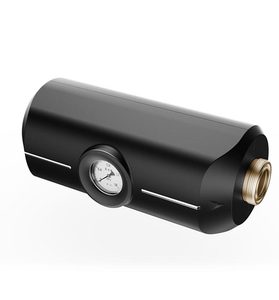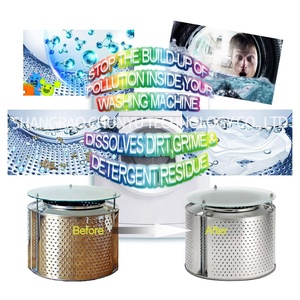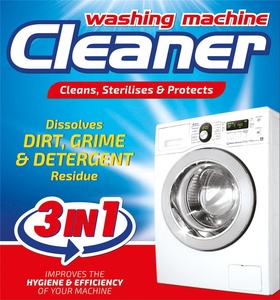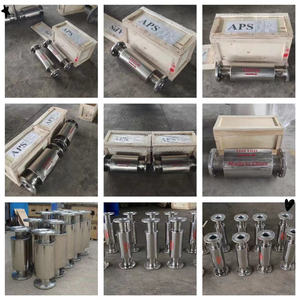(5074 products available)

































































































































































































There are many different types of descaler 3 in 1 products available in the market. Each of them has unique features that make them ideal for specific applications. Below are the main types of 3 in 1 descalers.
3 in 1 descaler brushes
A 3 in 1 scale remover tool brush is designed to clean, descale, and sweep away built-up debris or residues. This handy tool is especially useful for cleaning kitchen appliances like coffee makers, kettles, or other water-using devices prone to mineral deposit accumulation. The tool comes with three essential functions in one compact design: a brush, a pick, and a scraper. The brush has soft bristles, ideal for gently scrubbing away stains and deposits, while the pick part can dislodge stubborn scales. The scraper effectively removes larger chunks of scale or grime, making it suitable for various cleaning tasks. This appliance is practical and efficient for maintaining appliances and ensuring their longevity.
Cordless electric descaler
A cordless electric descaler offers convenience and efficiency for removing limescale and mineral deposits from appliances and fixtures. This versatile tool is equipped with a powerful motor that drives the scaling head in sharp, round motions, making it easier to chip away stubborn scales. Its cordless design ensures maximum flexibility and maneuverability during cleaning tasks. Many models come with interchangeable scaling heads and various brush attachments to suit different surfaces and levels of buildup.
Some units have an adjustable handle that provides comfort and control while working. Using a cordless electric descaler helps restore the shine and functionality of faucets, showerheads, tiles, and other appliances prone to limescale buildup.
Electric descaler
An electric descaler is a specialized cleaning tool designed to remove limescale and mineral deposits from household appliances such as kettles, coffee makers, and dishwashers. It uses high-frequency vibrations to dislodge these stubborn buildups, often caused by hard water. The electric descaler comes with a durable handle and a detachable scaling head, which may include various brush attachments to target different surfaces effectively.
The right scale remover for kettle or coffee machine should serve well in tackling the scaling issue. Here are some key points to keep in mind when choosing a 3 in 1 descaler.
Solution type
There are two primary solutions for descaling appliances: powder and liquid solutions. A liquid solution is easy to use, requiring less measuring and mixing. It is also less likely to leave residue. Powders are often more affordable than liquid solutions, but they require measuring and mixing. Buyers should consider the pros and cons of each type when choosing the solution that will work best for their needs.
Packaging
Some descaling solutions come in single-use packets, making them easy to use and convenient. Other solutions are packaged in larger quantities, like bottles or tubs. These can be more affordable, but they may require more effort to use, as buyers will need to measure out the correct amount. Buyers should consider the amount of scaling that needs to be cleaned when choosing the type of packaging that will work best for their needs.
Safety
When choosing a descaling solution, it is essential to consider the safety of the product. Some solutions contain harsh chemicals that can damage the appliance or be harmful if ingested. Look for a product that is safe for the appliance and won't cause damage. It is also essential to follow the manufacturer's instructions when using the solution to avoid any potential harm to the appliance or the user.
Effectiveness
Not all descaling solutions are created equal, so choose one that will be effective in removing the scale buildup. Read reviews and ask for recommendations from people who have used the product to get an idea of its effectiveness. It is also essential to choose a solution that is appropriate for the type of appliance being cleaned, as some products may work better for certain appliances than others.
Value
Consider the cost of the descaling solution and the value it provides. Some solutions may be more expensive but offer better effectiveness and safety features. On the other hand, cheaper solutions may be just as effective for the job. Assess the overall value of the product and choose one that fits the budget while providing the desired results.
Prepare the appliance: Disconnect the appliance from the power source and empty the water tank or kettle. Any appliance used with water must be removed before applying the solution.
Prepare the solution: Mix the descaling solution with water in the tank or kettle. Follow the instructions on the packaging to determine how much solution to use. For a mild solution, use a vinegar-water mixture at a ratio of 1:1. For a strong solution, use store-bought tablets or solutions.
Let the solution sit: Allow the solution to sit for a certain amount of time. This will enable it to dissolve the scale buildup. The time will vary depending on the appliance and how severe the scaling is. Check the packaging for specific instructions.
Run the appliance: If it is a coffee maker, run it through one complete cycle. If it is a kettle, heat it until it boils, then turn it off. For other appliances, run them as usual. This will get the solution into the parts that need to be cleaned.
Empty the appliance: After running the appliance, empty the tank, kettle, or any other part that contained the solution. Rinse it thoroughly with water several times to remove any remaining solution.
Repeat if necessary: If there is still any visible scale buildup, repeat the process. It may be necessary to use a stronger solution for stubborn buildup. Descaling powder may work better than vinegar.
Follow Instructions: Adhere to the instructions provided on the packaging or label of the descaler. Different types of descalers may have varying usage guidelines.
Use Protective Gear: When handling strong descaling agents, wear appropriate protective gear, such as gloves and goggles, to safeguard against skin and eye irritation.
Ensure Proper Ventilation: When using descaling solutions indoors, ensure adequate ventilation to dissipate any fumes or strong odors that may be released during the process.
Avoid Mixing Chemicals: Refrain from mixing descaling agents with other household chemicals, as this can produce hazardous reactions.
Test on a Small Area: If using a new descaling product, test it on a small, inconspicuous area of the appliance or surface to ensure compatibility and avoid damage.
Rinse Thoroughly: After descaling, rinse the appliance or surface thoroughly with water to remove any remaining traces of the descaling agent and prevent any potential residue from affecting future use.
Q1: How often should these products be used?
A1: It depends on the water hardness level. If the water is hard, the product should be used once a month. If the water is soft, it can be used every three to four months.
Q2: Can vinegar be used instead of a descaling solution?
A2: Yes, vinegar can be used as a natural way to descale. However, it is a weaker solution, so it may take longer to remove the buildup. It also has a strong smell that some people may not like.
Q3: Are store-bought descaling solutions better than natural ones?
A3: Store-bought solutions are stronger and more effective at removing buildup. They also have a pleasant smell and are less likely to irritate skin. Natural solutions take longer to work and may not remove all the buildup.
Q4: What is the benefit of using a toothbrush to scrub buildup?
A4: A toothbrush has bristles that can reach nooks and crannies where buildup occurs. Scrubbing with a brush helps loosen deposits so the solution works better.
Q5: How long does it take to descale a kettle or coffee maker?
A5: It takes 30 minutes to an hour, depending on the amount of buildup and which method is used.